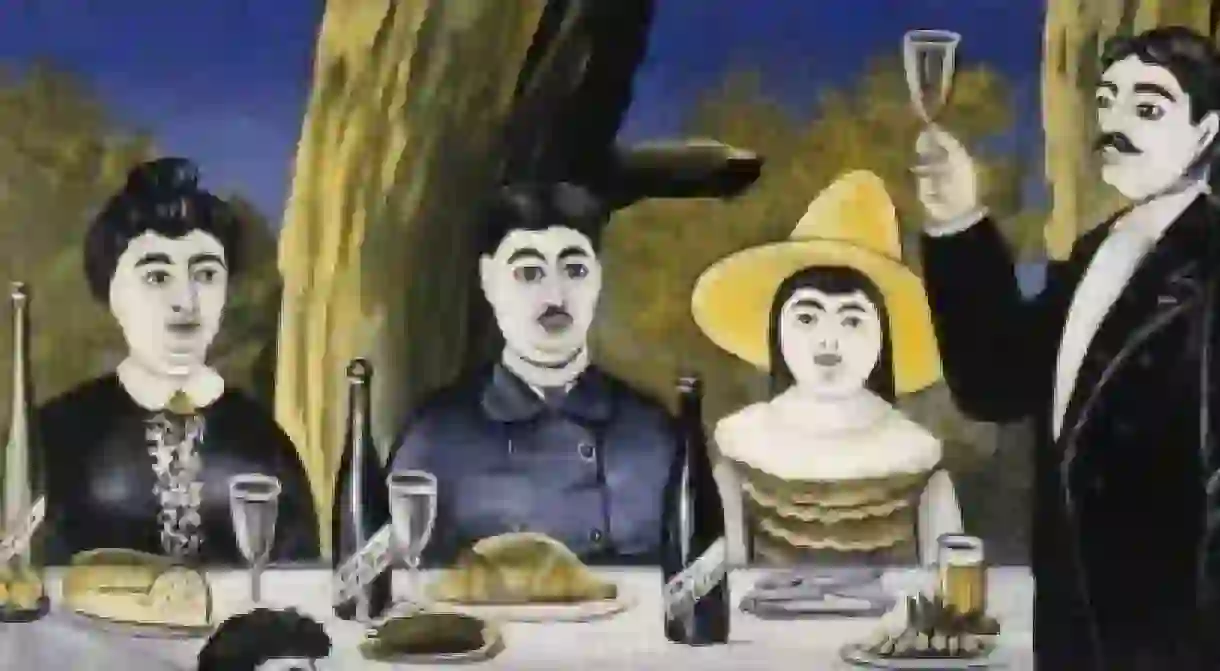How to Eat Like A Local At A Georgian Supra

A ‘supra’ is a traditional and extravagant Georgian meal, held on all big occasions and a backbone of Georgian social culture. If you’re lucky enough to be invited to one you’ll want to know how to eat like a Georgian. We look at the traditions, manners and must-dos at these feasts.

Though the specifics vary depending on the host and the company present, many elements of a supra are always the same. The traditional leader of the supra is the Tamada, or toastmaster, who leads the toasts. This person is as vital to the supra as the supra is to Georgian culture, because supras revolve entirely around toasts, which can stretch out to several minutes in length. The Tamada always opens with a toast to Sakartvelo (Georgia, in Georgian) and then one to God, and then generally one to the most honored people in the room, the guests.
Georgian hospitality is the stuff of legend, and the long and flowing toast to the guests’ presence and what they bring to the table (both literally and figuratively) is evidence of it. New courses of food are always served to the guests first, and other toasts will make reference to them and what they represent. An American, for example, will always hear a toast to the friendship between Georgia and America, although this is of course not mandated by the unwritten, but strictly followed, rules governing supras.
Unsurprisingly, these rules also dictate drinking habits. The Tamada is expected to empty his glass with each toast, and the more traditionally motivated guests will do the same. Guests have more leeway, although they’ll be lauded if they can keep up. And no matter which route they have chosen, it’s absolutely imperative that they do not drink from a glass less than half full. For those drinking slowly, this just means frequent top-ups. For those drinking a full cup with each toast, this means a drinking a significant amount during the meal.
Sometimes, the wine will not come out of glasses. It’s typically Georgian to drink out of horns, either real rams’ horns or porcelain replicas. These ceremonial objects will come down from hearths to grace the supra table, often being passed around from one person at the table to the next.

The carafes of wine often seem bottomless, as the supra’s hosts are always refilling them. If they make their own wine, as is likely in many areas of Georgia, then they’re simply drawing it out of storage jugs deep in their pantries or cellars. Wine is another element of their culture that Georgians are immensely proud of, and families relish the opportunity to share what they’ve produced. A supra, of course, is the perfect opportunity. The choices narrow as winter turns to spring and summer and the last harvest recedes into the past, but at a supra there is never any danger of running out.
To the untrained eye, the food probably seems to come from the same never-ending source as the wine. It starts with tones puri, the boat-shaped Georgian flatbread that bakes in ovens that seem like holes dug into the ground, and the tones puri never completely leaves the table. The first rounds usually include numerous spreads and salads (often more mayonnaise than vegetable) that the guests are encouraged to eat. But be warned not to eat until you’re full, as this is only the beginning. In truth, any guest at any Georgian meal should be warned of this danger; because of the culture of hospitality, the guest could possibly not turn down food enough to convince the host to stop offering it.
At some point, a real national favorite will appear on the table in all of its greasy, steaming glory: khachapuri, or cheese bread. It comes in various forms depending on the region; Imeretian, which is circular fried bread filled with cheese; Mingrelian, which is like the Imeretian variety but with cheese on top; or Adjarian, which is boat-shaped and has an egg and a pat of butter that gets mixed into the cheese. A single piece of khachapuri could in many cases be a meal in itself, but not at a supra.

Another important course is the meat, which usually comes in the form of shasliki, or chunks of pork that have been roasted over the dying embers of a fire. Guests fortunate enough to be at a supra in the countryside will often be treated to fresh meat, straight from the garden. In Georgia, having animals in the yard is not a privilege reserved only for those with lots of land. A chicken coop, after all, only takes up a small corner.
Besides the main events, though, the food will continue in courses until plates are stacked on top of each other all over the table. The hosts will take care, however, to replace the guests’ plates, so that when the numerous cakes come out for dessert, no one has to deal with any unsavory mixing. There will also always be choices; one cake simply wouldn’t be enough for the grandeur that is a supra, although by the time they come out, few people actually have the desire (or ability) to eat them.
If it’s a proper supra, the attendees will leave tipsy and full, in both body and spirit. They will feel camaraderie with the other people around the table, a connection after all the toasts, wine, songs, food, and conversation. New relationships will have been forged, new memories created. And if it’s a big occasion, they had better be ready for another one the next day.













